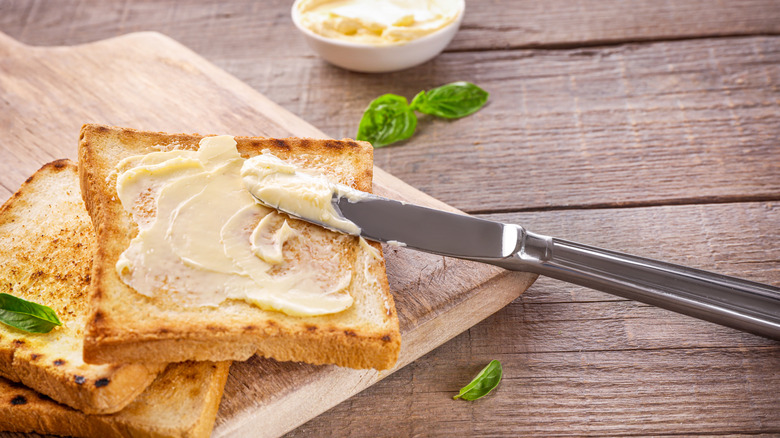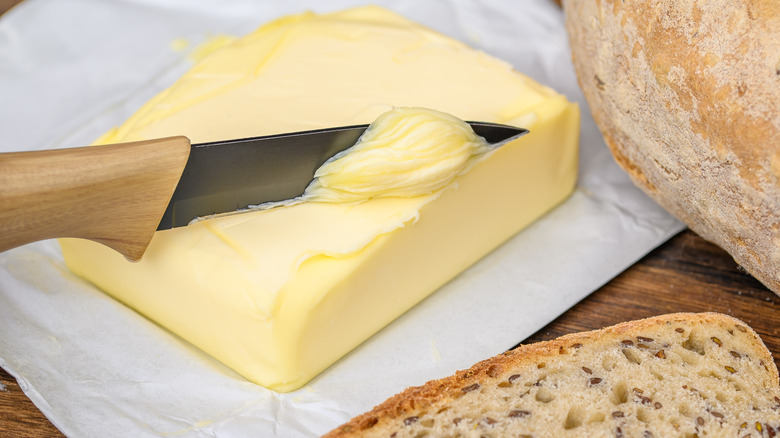How The Dairy Industry Shaped Margarine's Bad Reputation
Margarine, a controversial condiment that was one of the many trending foods of the 1980s, traces its origins to the late 1800s in France, developed by a French chemist as a cheaper and more-suitable replacement for butter in light of food shortages in the country. As this buttery spread began gaining traction in American markets, with consumers using margarine as a reliable substitute for baked goods, among other culinary applications, there was one very displeased, yet powerful entity plotting a takedown of this typically plant-based (some brands may include animal ingredients) butter substitute — the dairy industry.
Margarine made its grand entry into the United States market in the late 19th century when consumers were already dissatisfied with the quality of traditional butter. As it started gaining popularity as a cheaper alternative to butter, the dairy industry launched an aggressive campaign against this dairy-free counterpart. Notably, when margarine manufacturers began tinting their product yellow to resemble butter, the dairy industry responded by pushing for state and federal legislative change and public vilification. The lobbying efforts from the dairy industry eventually led to several dairy-loving states like Delaware making it illegal for restaurants to serve margarine unless diners are specifically informed that a butter alternative is used. The industry successfully lobbied for the 1886 Oleomargarine Act, which imposed taxes and strict labeling requirements on margarine manufacturers. With a heavy-handed campaign such as the anti-margarine movement launched by the dairy conglomerates, the butter replacement's reputation took a hit, alongside pieces of misinformation and factual inaccuracies that persist even today.
What exactly is margarine and is it healthy?
Despite some similarities in their applications — and in some cases — appearance, butter and margarine have significant differences. Margarine is a spread made primarily from vegetable oils and is essentially an emulsion from processing refined vegetable oils with water. While some early versions used beef tallow as the fat source, most modern margarine is made entirely from vegetable oils through a process called hydrogenation.
Older iterations of margarine often contained high levels of trans fats, but today there are margarine varieties with little to no trans fats on the market, making it a possibly healthier replacement for butter. Without any animal-derived inputs, margarine is typically lower in saturated fat and naturally cholesterol-free. However, it is still calorically on par with butter — so moderation is key to incorporating a healthier serving of margarine into your meals. Plus, not all margarine is made with the same ingredients. So, as a general rule, for any plant-based swap for butter, the best thing to do is read the label and opt for versions that are low in saturated fat, have no trans fats, and contain minimal processed ingredients.

